"Frances Christeson and Harry Merrick have shown in their film, Architecture and Fine Arts, what can be done with the motion picture camera by sensitive, yet systematic, movie makers. Produced under the supervision of A. C. Weatherland, dean of the College of Architecture and Fine Arts at the University of Southern California, the picture shows students at work and gives glimpses of class room technique in teaching most of the fine arts. Although no section of the film is long or detailed enough to serve the purpose of teaching, the film, as a whole, gives a very clear and concise picture of the scope of the work of the architecture and fine arts college of the University of Southern California. Technically and cinematically, this record is superb; beautiful compositions, carefully selected and composed scenes, combined with titles of distinction, make it a truly outstanding production. Included in the picture, that is for the most part in black and white, are color sequences of stained glass windows." Movie Makers, Dec. 1936, 542.
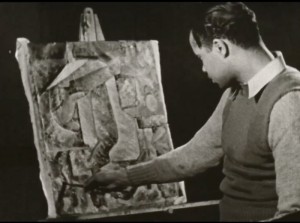
"Educational film surveying the instruction of the fine and performing arts at leading African American institutions, including Calhoun, Dillard, Fisk, Hampton, and Howard. The film argues that exposure to theater, music, dance, and the fine arts produces well-rounded students and enriches their lives." National Film Preservation Foundation.
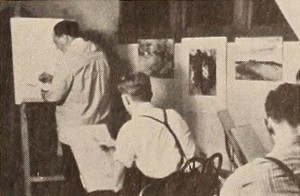
"Builders of Tomorrow, produced by the Cinema Laboratory of Western Reserve University and filmed by Dr. James E. Bliss, takes one into the Cleveland School of Architecture at Western Reserve and shows the embryonic architects at work. The students are pictured studying the principles of design, drafting and in art classes. Architectural models are expertly filmed and with lighting and treatment that, in several cases, make them indistinguishable from actual structures and streets. The entire picture is interior color and the lighting is ably handled throughout." Movie Makers, Dec. 1938, 621.
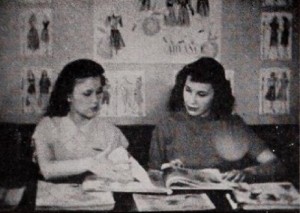
"One of the most unusual educational institutions in America, the John Hay High School, of Cleveland, Ohio, is devoted exclusively to courses that adapt the student to life in a business civilization. Business Champions, produced for the school by Anthony L. Cope, a John Hay instructor, provides fine coverage of all the school's activities. With the end product — a well adjusted citizen with a job — constantly in mind, Mr. Cope shows fully and intelligently how John Hay determines and develops the aptitudes of its students." Movie Makers, Dec. 1948, 492.
"Portrait of Calhoun School, founded in 1892, and its vocational work among rural African Americans of Lowndes County, Alabama. The film shows the living conditions of the poor and illustrates how the school makes a difference in health education, agriculture, and road construction." The Field Guide to Sponsored Films.
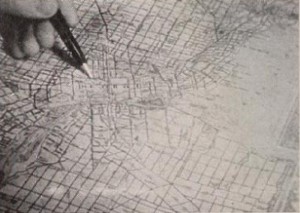
"The cooperative plan of education of Antioch College is presented in Campus Frontiers, made by George Chuck Klein. The picture shows how, every ten weeks, half the undergraduates of Antioch exchange classrooms for jobs in offices, factories and hospitals. The frontiers of Antioch's campus are in the world of business, engineering and production. Mr. Klein, traveling over many States, pictured the work experiences of typical Antiochians and shows how their jobs integrate with their classroom studies. The film is an extraordinary record of American industry and science — high lights of the nation's work on a vast scale. Considering the varied lighting difficulties and the problems of organizing setups, Mr. Klein has made an extraordinary picture, the biggest known of its kind. The film is imaginative and clever, with a well planned theme that ties the diverse material together. Numerous cinematic effects are included, and the whole is accompanied by dramatic commentary, recorded on disc." Movie Makers, Dec. 1942, 507.
"Campus Smiles uses a playful tone to document the faculty, student body, and life at UW-Madison during the early 1920s. This documentary short is a compelling chronicle of the local culture at one of the nation’s largest universities and offers a glimpse into the undergraduate sphere of the immediate post-WWI era. In it, humorous intertitles penned in early twentieth-century American slang introduce campus personalities and comment on social events." Archive.org
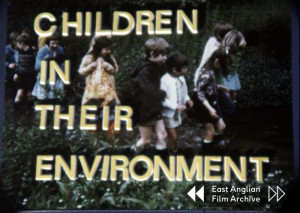
A documentary film demonstrating how learning and education in the classroom can be supported by an engagement with the local community and natural history.
"Documentary: Depicts lives of children in the Belgian Congo and French Cameroon." National Archives.
"Item is a documentary film about the rationale for, the construction of, and the opening ceremonies of the Holy Blossom Synagogue. Seen are shots of the crowded and dim classrooms within the old Bond St. Synagogue, its predecessor. Also seen are scenes of the official sod turning, the laying of the corner-stone, and some of the construction work on Holy Blossom at its new location at the corner of Bathurst Street and Ava Road. These are followed by various scenes of the new building’s interior and exterior. The film ends with the May 16, 1937 official opening ceremonies of, and the transfer of the Torah scrolls to, the new facility. Identified in the footage is Edmund Scheuer." Ontario Jewish Archives.
Total Pages: 5